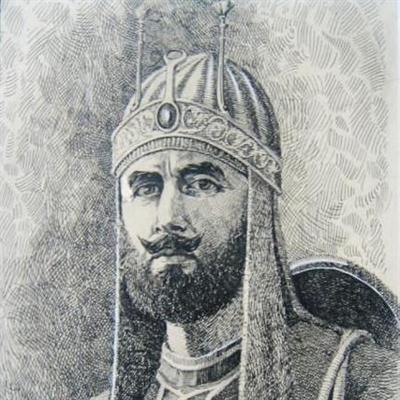PDF chapter test TRY NOW
Babur’s death and the Rise of Humayun:
- The death of Babur passed the baton of the Mughal empire into the hands of Humayun, the elder son of Babur. Humayun took over the reign in 1530. Humayun separated the land inherited from his father and divided it among his siblings.
- All the siblings wanted the throne of Delhi, which was the seat of the Mughal empire, so Humayun had to deal with the issue of sibling threat.
Humayun’s reign: (1530 – 1540 and 1555 – 1556).
- Humayun had to deal with multiple threats during his tenure, and the most notable among them were the Bahadur shah of Gujarat and the Afghan ruler.
- He fought numerous battles with local rulers where he emerged victoriously, but the formidable enemy he faced during his reign was Afghan ruler Sher Shah of Sur empire.

Humayun
- Humayun faced Sher shah in two big battles, namely
- Battle of Chausa in 1539 and
- Battle of Kannauj in 1540
- Sher Shah defeated Humayun in both the battles. Humayun fled the battle scene in 1540\ and took Asylum in Iran under its ruler.
- Humayun re-emerged the Indian political scene in 1555\ post the collapse of the Sur empire after its ruler Sher Shah Sur's death. Humayun captured Delhi on his arrival and extended his rule till 1556.
HUMAYAN NAMA: This book was written in praise of Humayun by his sister Gul Badan Begum, which speaks about the rule and accomplishments of the ruler.
The artistic side of Humayun:
- Humayun was a great patron of arts among the Mughal emperors. He was also credited for the introduction of Mughal painting during his reign. He brought two painters named “Mir Sayyid Ali and Abdul Samad” to India.
- He is also known for building “Jamali Mosque and Isa Khan Mosque in Delhi.
- His widow built the tomb of Humayun, “Amida Begum”.
- Humayun met his death in 1556 when he fell from the library that he built for enhancing his knowledge.
Sher Shah Suri’s Period:
- This was the second Afghan empire in India, which was established by Sher Shah of the Sur dynasty. He ruled over the areas of Bihar (Sasaram) and engaged in Battle with the Humayun, whom he defeated twice.

Sher Shah Suri
- Sher Shah was an able ruler who ruled India for five years, 1550 – 1556. During his rule, he revived the city of Pataliputra from its ruins.He was given the name Sher after killing a Tiger with his bare hands; he was awarded the title "Sher" due to that incident.
Features of his rule:
- Sher Shah was a great builder and astute administrator. He built the “Grand Trunk road – that stretched from modern-day Bangladesh to Kabul in Afghanistan” during his rule.
- He is also credited for introducing various systematic practices like,
1. Weights and Measures
2. First Rupiya or Standard Coins
3. Land revenue system - Sher Shah met his death during the building of a fort in Kalinjar. He died due to the explosion of gun powder.
